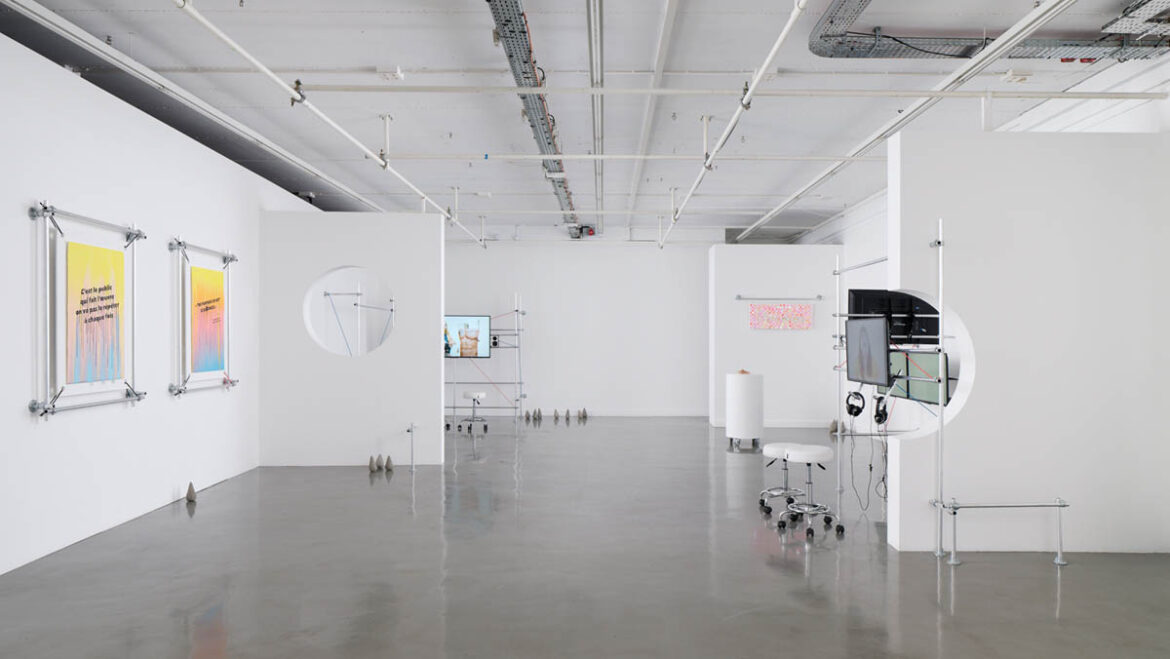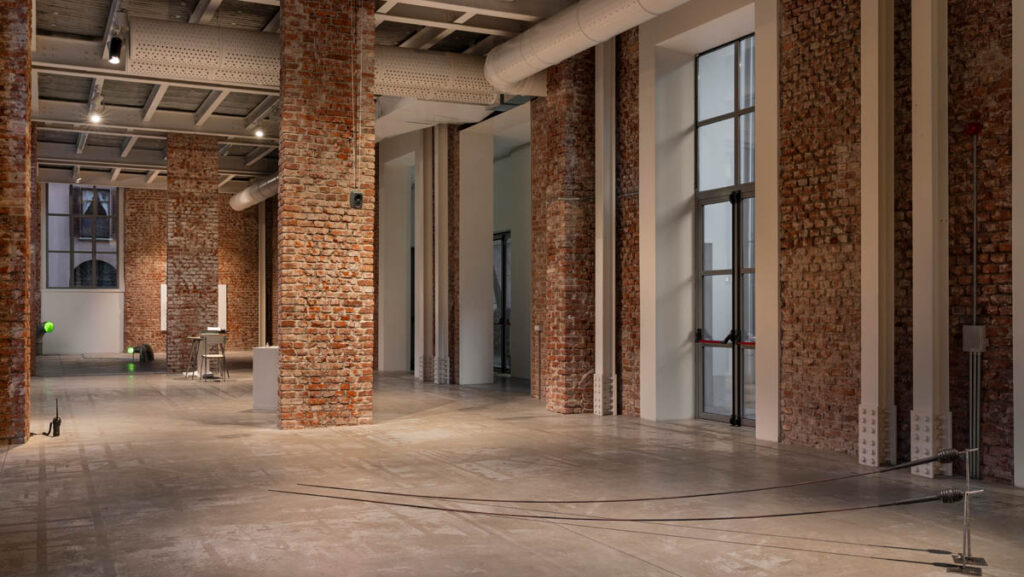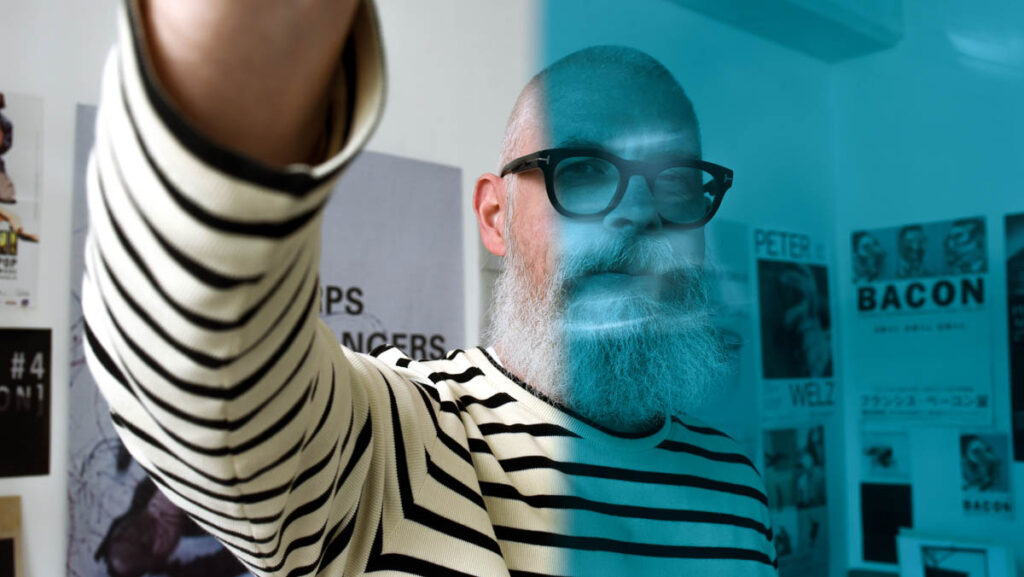Thanks to a carefully orchestrated „kayfabe,“ even outside the ring, the hermeneutic of belief overpower one of cartesian certitude.The visual and participatory pleasure comes from this consent to make-believe, from the joy of considering every sign and action as Real—despite knowing it is not. This performative practice, which interprets the hyperbolic artificiality as something spontaneous and sincere, challenges the persistent idea of a passive audience confronted with the spectacle before them, especially in ‘popular/lowbrow’ sport. The agency of the viewer— their willingness to accept or reject the proposition —is an issue shared by contemporary art philosophy: this is art because I — and the institutions surrounding me — choose to perceive it as such within a specific framework. The ring and the white cube share the same potentiality of performative transformation of the subject standing – and struggling – inside of it.
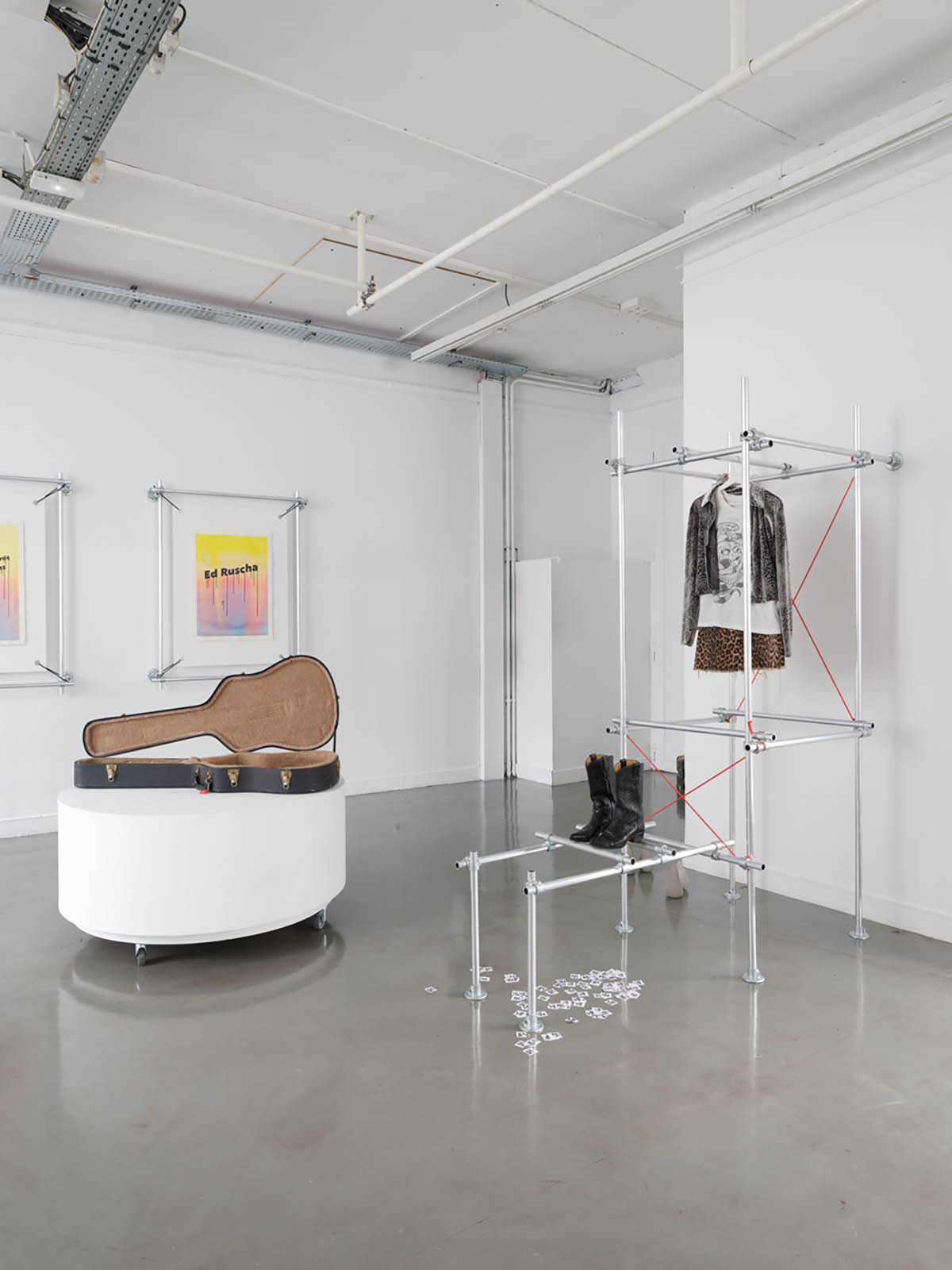
The Breaking Kayfabe exhibition cycle, curated in 2025 by Camille Martin in La Maison Populaire, aims to break this illusion. It showcases artists who engage with the existing fictional dynamics within the exhibition space. As heirs to the ideas of institutional critique, they highlight the performativity of the art world by playing with kayfabe. Wrestling, as a discipline that is acutely aware of its ambiguous relationship with reality, provides the conceptual framework for this curatorial approach, offering a lens through which to decode and expose the art world’s constructed nature. By embodying characters, avatars, or alter-egos, the four artists playfully perform the expected and demanded codes of the art world. This curatorial proposition, supported by the Centre d’Art, draws on wrestling jargon to decode and expose the artificiality of the art world. Advised by wrestling expert Félix Gouty, Camille Martin transposes this vocabulary into the realm of institutional critique. Curation seemes here to be understood as a practice of radical exteriority ( a ‘parasitical activity’ once wrote Charles Esche) based on the appropriation and reinterpretation of methodologies explicitly other than itself. It operates a hermeneutic, methodological, and linguistic transposition, where analytical frameworks and signifying systems from a distinct domain are applied to art, revealing new layers of interpretation. More than a mere formal borrowing, it involves an analogical strategy that, by integrating ‘foreign’ languages and structures, questions how meaning is constructed, assigned, and received within the exhibition space. By watching art from a wrestling perspective, with its own tools and vocabulary, Camille Martin shares a new image of the bittersweet reality of the art scene. Applying the critical tools of wrestling to contemporary art means viewing the exhibition not merely as a space of monstration but as a field of symbolic and strategic struggles. From the figure of the heel and the face (the villain and the hero) to the worked shoot (a staged conflict designed to appear real), wrestling’s lexicon exposes an underlying grammar of power relations, alliances, antagonisms, and domination that structure the emerging artistic sphere.
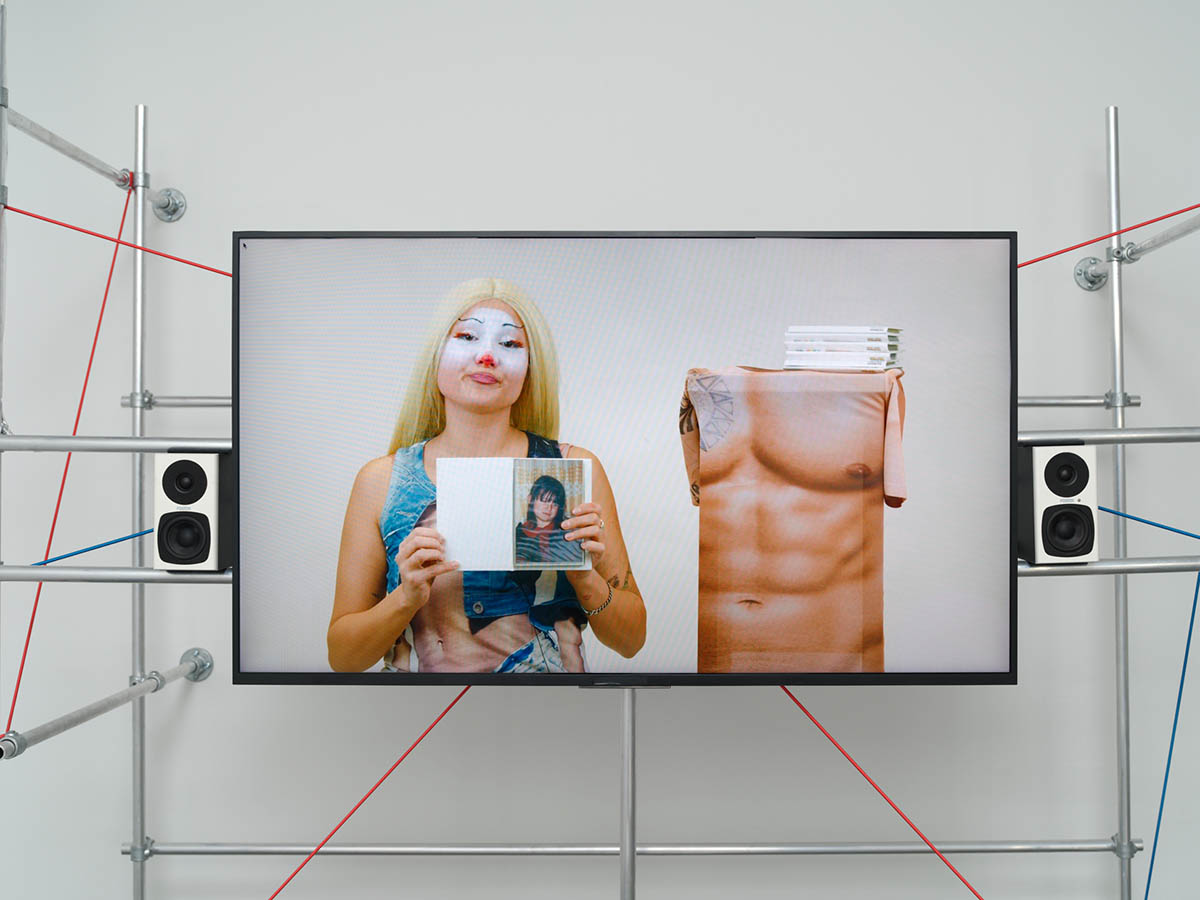
A new series of watercolors by Gwendal Coulon is displayed, once again mimicking the signature gradient background of Instagram—an app that has become essential for artists and art workers’ communication. The never-ending public showcase of victories and „upcoming projects !! coming soon !!“ in stories is subverted into an ode to failure. Black-painted punchlines bleed sadly onto the paper, narrating the endless carousel of disillusionment—between failed open calls (in wrestling jargon, a “job” refers to losing a match) and the rigid codification of one’s digital persona. The names of Duchamp, Broodthaers, and Ed Ruscha are forcibly stamped onto the canvases, as the artist playfully questions the mythologies and gravitas surrounding them.
Inès Guffroy presents the accessories and costumes of two personas she performs during institutional invitations. Their attributes haunt the gallery space like a snake’s shed skin, ready to come to life during performance evenings. These archetypal figures parody and usurp the status of the successful artist—whether through Nessinistre, the guitarist of the fictional PPP Band, a group that exists only through its promotional materials, or through the “masked character” of Inès Guffroy herself (any resemblance to the artist being purely coincidental…). Humor and absurdity become tools to challenge the grandiose narratives of the art world, echoing the in-ring storytelling strategies of professional wrestling. A single-shot video by artist/vlogger/TikToker PJ Horny features the artist in drag narrating, like a fairy tale reading, the photo albums compiled by her grandfather. These intimate archives and cherished objects, scattered across the gallery floor, serve as the foundation for a reflection on the genesis of PJ Horny’s act: a bigger-than-life persona crafted to charm, entertain, and probe our relationship with self-staging. Her sound effects and miming draw from French internet culture and trendy music, distilled to their most popular fragments. The core principles of clowning and burlesque are rejuvenated by the grotesque humor and reductive semiotics of social media. On the adjacent wall, a glittering sequin sign evokes a circus aesthetic, spelling I LOVE MASCS. Playing on its homophony with „masque,“ the work humorously explores the connection between clown makeup and the heightened and hyper-feminine performance of gender.

Performance becomes (non)performance in Noémi Lancelot’s work Artists Who Do Nothing. The concept of non-performance, derived from Fred Moten’s research, points to a strategy of dispossession—a form of resistance against assignment, critical scrutiny, and normative judgment. Far from signifying absence or emptiness, this “non” becomes an invitation to explore new paths, to invent critical and collaborative forms of agency, “unorthodox behaviors.” Non-performance thus emerges as a strategic refusal to meet expectations. This inclination towards absence allows Lancelot to consider the act of doing things halfway—or even doing nothing at all—as a genuine artistic statement. The insufficiency of her works reflects her inner conflicts, wavering between the desire to dismantle the institution from within and the urge to abandon art altogether. Visitors, whether frustrated or satisfied, discover three videos looping a blank screen, each lasting exactly as long as interviews conducted by the artist with workers uninvolved in institutional dynamics. The artwork is real but the artist refuses its presence in the institution that commanded it. A fourth video portrays Noémi Lancelot as a self-proclaimed forger and scoundrel. It is not merely the absence of action but an act of resistance through non-conformity—a deliberate withdrawal from standardized forms of visibility and mediation. This non-performance aligns with a strategy of fugitivity, where the refusal of visibility, assignment, and legibility becomes a form of emancipation.1
Exhibition: KEEP IT FAKE!
Exhibition duration: 28. January – 12. April 2025
Address and contact:
Maison Populaire
9 bis Rue Dombasle, 93100 Montreuil
www.maisonpop.fr
By placing these two systems in dialogue—one built on spectacular confrontation, the other on more diffuse forms of staging and power— this show becomes a site of experimentation where linguistic transposition serves as a critical lens. Artistic performance is rewrote in terms of negotiation, deception, and trickery. Wrestling, in its specificity, functions as a production of questions to which artistic practice must respond. KEEP IT FAKE offers a preliminary answer, and the following exhibitions of the cycle will surely explore other curiosities of this interdisciplinary dialogue.
- KEEPT IT FAKE- Maison Populaire
Bouvet-Zieleskiewicz, L. (2024). Les formes du refus : politique de la non-performance. Art Critique. ↩︎




